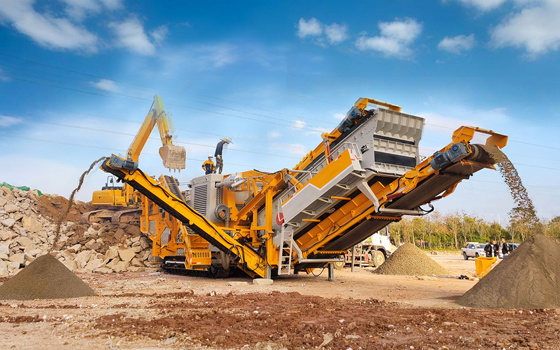Jaw Crusher Parts: The Backbone of Efficient Crushing Operations
Release Time:
2025-08-06
Author:
Source:
High-quality jaw crusher parts ensure durability, efficiency, and consistent crushing performance in mining and construction.
In the mining, construction, and aggregate industries, the jaw crusher is a cornerstone piece of equipment used for primary crushing of raw materials. Its efficiency and reliability heavily depend on the quality and performance of its components, commonly referred to as jaw crusher parts. These parts play a vital role in the crusher’s operational lifespan, throughput capacity, and maintenance requirements. Understanding the components of a jaw crusher and their significance can greatly impact productivity and cost-effectiveness in crushing operations.
Jaw crushers work by applying compressive force to break down large rocks and ores into smaller, manageable pieces. The machine consists of two jaws: one fixed and one movable, which together form a V-shaped chamber. The movable jaw exerts pressure on the material against the fixed jaw, crushing it as the jaw moves back and forth. This simple yet effective mechanism is powered by several key components, which need to be robust and wear-resistant to withstand harsh working conditions.
Among the most critical jaw crusher parts are the jaw plates. These are heavy-duty manganese steel plates that line the crushing chamber on both the fixed and movable jaws. Jaw plates come in various profiles and sizes depending on the crusher model and the nature of the material being processed. Their design directly affects crushing efficiency and product size. Over time, jaw plates experience wear and tear due to constant impact and abrasion, making regular inspection and timely replacement essential to maintaining optimal performance.
Another indispensable component is the toggle plate, which serves as a safety device and a mechanism for transferring energy. The toggle plate connects the swing jaw to the main frame and can break under excessive load, protecting the rest of the crusher from damage. Additionally, toggle plates are responsible for converting the rotary motion of the drive shaft into the linear motion of the movable jaw, enabling the crushing action. Because of their pivotal role, toggle plates must be made from high-strength materials and inspected frequently.
The eccentric shaft is the shaft responsible for driving the movable jaw. It rotates within bearings and imparts the necessary movement to crush materials. This shaft endures tremendous stress and strain, especially when processing tough or abrasive materials. Proper lubrication and periodic maintenance of the eccentric shaft and its bearings are critical to prevent premature failure and avoid costly downtime.
Other jaw crusher parts, such as bearings, flywheels, frame, and adjusting devices, contribute to the overall stability, power transmission, and adjustment of the crusher settings. Bearings support rotating parts and allow smooth movement, while flywheels store energy and provide inertia, ensuring consistent crushing strokes. The frame is designed to be rigid and strong enough to handle intense forces during operation. Adjustment mechanisms allow operators to control the size of the discharge opening, thus regulating the size of the crushed output.
Selecting high-quality jaw crusher parts is essential not only for maximizing productivity but also for minimizing operational costs. Inferior parts may wear out quickly, cause inefficient crushing, or even damage the machine, leading to unexpected repairs and production stoppages. Using parts manufactured from premium materials such as manganese steel or alloy steel significantly enhances durability and performance.
The maintenance of jaw crusher parts is equally crucial. Regular checks for wear, cracks, or deformation can prevent catastrophic failures. Scheduling replacement of jaw plates and other wear parts before they reach critical wear levels helps maintain the crusher’s crushing capacity and product consistency. Lubrication of moving parts and ensuring the proper alignment of components further extend the service life of the equipment.
Technological advancements in manufacturing have led to the development of more wear-resistant materials and improved designs for jaw crusher parts. Innovations such as hydraulic adjustment systems, modular jaw plates, and enhanced alloy compositions provide better efficiency, easier maintenance, and longer service intervals. These improvements allow operators to adapt crushers to varying material types and operational demands, optimizing performance and cost-effectiveness.
Jaw crusher parts are not only critical in mining and construction but also in recycling industries, where crushers process concrete, asphalt, and other demolition debris. The ability to crush tough materials efficiently while maintaining low downtime is vital for these industries. Reliable parts reduce the need for frequent maintenance and increase operational uptime.
In conclusion, jaw crusher parts form the backbone of efficient crushing operations. Their quality, design, and maintenance directly affect the performance, reliability, and longevity of jaw crushers. Investing in high-quality components and adhering to strict maintenance schedules ensures that crushing plants operate at peak efficiency, delivering consistent product quality and maximizing profitability. As the demand for raw materials continues to grow globally, the importance of durable and efficient jaw crusher parts will only become more pronounced.
Keywords:
Jaw crusher parts | Shredder parts | Cone crusher Parts | Ball mill parts
Related News









